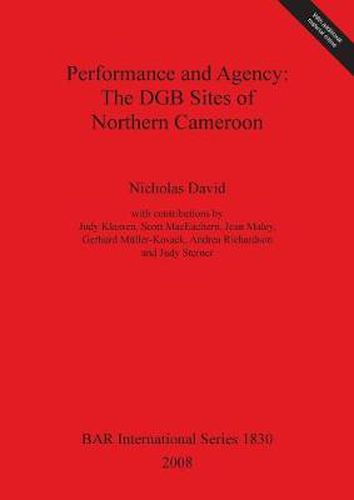Readings Newsletter
Become a Readings Member to make your shopping experience even easier.
Sign in or sign up for free!
You’re not far away from qualifying for FREE standard shipping within Australia
You’ve qualified for FREE standard shipping within Australia
The cart is loading…






This title is printed to order. This book may have been self-published. If so, we cannot guarantee the quality of the content. In the main most books will have gone through the editing process however some may not. We therefore suggest that you be aware of this before ordering this book. If in doubt check either the author or publisher’s details as we are unable to accept any returns unless they are faulty. Please contact us if you have any questions.
The dry stone structures that are the subject of this book are located in the Mandara mountains of the Extreme North province of Cameroon and are known to the Mafa who live among them as diy-ged-bay, best glossed as ruins of chiefly residence . From this the term DGB site is derived, having the advantages of brevity and of lacking implications regarding function. Following the introduction, chapter 2 presents basic information on all known DGB sites and suggests a typology. Chapter 3 is an account of the excavation and dating of DGB-2 emphasizing its complex sequence of construction and reconstruction. Chapter 4 similarly presents the excavation of DGB-8. In chapter 5 there is an analysis of the artifacts and ecofacts from the excavated sites and thelight they throw upon the cultural sequences. Chapter 6 begins by extending the discussion of cultural sequence to the full set of sites. It then briefly evaluates and discards a number of the functional interpretations that were suggested prior to extensive fieldwork and excavation. Finally, by considering the archaeological evidence in the context of regional ethnology and the environmental record, a case is built for their having been centers of community ritual and performance related to water and reproduction. In chapter 7 Gerhard Muller-Kosack investigates concepts and traditions held by the Mafa regarding the population of the region and the builders of the sites. While these traditions throw little or no light on DGB culture, Judy Sterner shows that the DGB sites have had the more recent, turbulent, history of the region projected upon them. Finally, chapter 8 returns to the theoretical questions raised above and, after considering the energetics of DGB site construction, reassesses the sites in terms of the agential processes that brought them into being and the influence that they in turn exerted on their builders. A final section places the DGB culture in its broader archaeological and cultural context.
$9.00 standard shipping within Australia
FREE standard shipping within Australia for orders over $100.00
Express & International shipping calculated at checkout
This title is printed to order. This book may have been self-published. If so, we cannot guarantee the quality of the content. In the main most books will have gone through the editing process however some may not. We therefore suggest that you be aware of this before ordering this book. If in doubt check either the author or publisher’s details as we are unable to accept any returns unless they are faulty. Please contact us if you have any questions.
The dry stone structures that are the subject of this book are located in the Mandara mountains of the Extreme North province of Cameroon and are known to the Mafa who live among them as diy-ged-bay, best glossed as ruins of chiefly residence . From this the term DGB site is derived, having the advantages of brevity and of lacking implications regarding function. Following the introduction, chapter 2 presents basic information on all known DGB sites and suggests a typology. Chapter 3 is an account of the excavation and dating of DGB-2 emphasizing its complex sequence of construction and reconstruction. Chapter 4 similarly presents the excavation of DGB-8. In chapter 5 there is an analysis of the artifacts and ecofacts from the excavated sites and thelight they throw upon the cultural sequences. Chapter 6 begins by extending the discussion of cultural sequence to the full set of sites. It then briefly evaluates and discards a number of the functional interpretations that were suggested prior to extensive fieldwork and excavation. Finally, by considering the archaeological evidence in the context of regional ethnology and the environmental record, a case is built for their having been centers of community ritual and performance related to water and reproduction. In chapter 7 Gerhard Muller-Kosack investigates concepts and traditions held by the Mafa regarding the population of the region and the builders of the sites. While these traditions throw little or no light on DGB culture, Judy Sterner shows that the DGB sites have had the more recent, turbulent, history of the region projected upon them. Finally, chapter 8 returns to the theoretical questions raised above and, after considering the energetics of DGB site construction, reassesses the sites in terms of the agential processes that brought them into being and the influence that they in turn exerted on their builders. A final section places the DGB culture in its broader archaeological and cultural context.